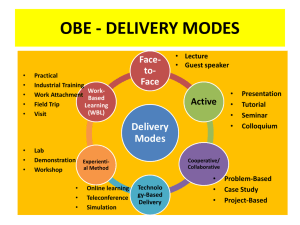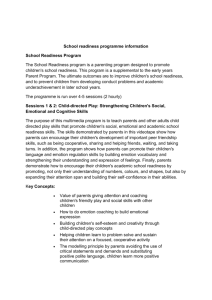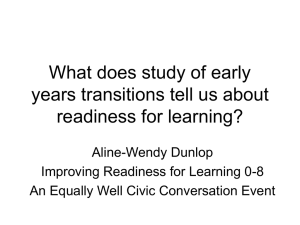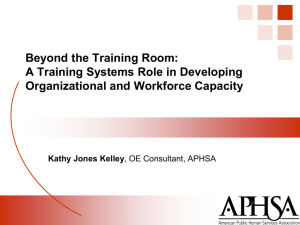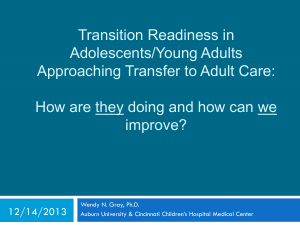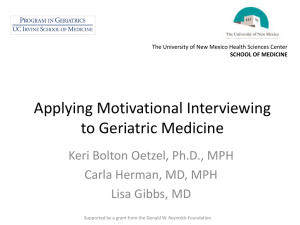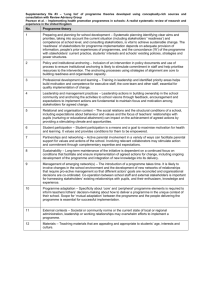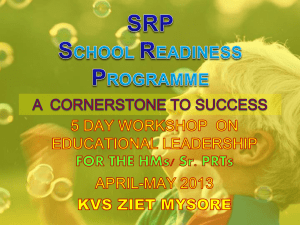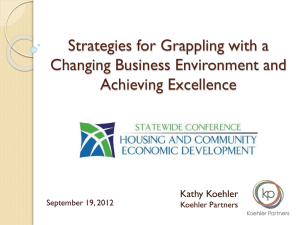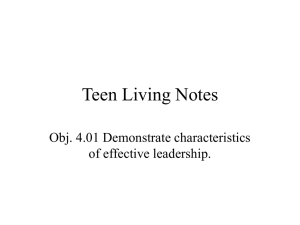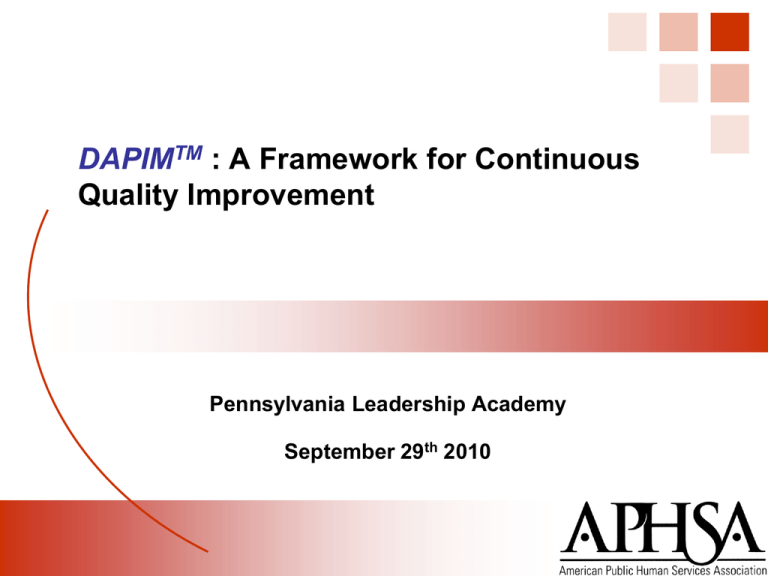
DAPIMTM : A Framework for Continuous
Quality Improvement
Pennsylvania Leadership Academy
September 29th 2010
Agenda
Agenda and Goals
Understanding the Need for a Framework for CQI
DAPIMTM : A Framework for CQI
Reflecting Thinking – Identifying Your Approach to Implementing
Change
Assessing Readiness for Change
Reflecting Thinking – Identifying Your Readiness for Implementing
Change
2
© 2010 American Public Human Services Association. All rights reserved.
Continuous Quality Improvement Defined
CQI is not a time-limited initiative or project.
It is the ongoing process by which an
agency makes decisions and evaluates
progress.”
Casey Family Programs & National Resource Center (NRC)
3
© 2010 American Public Human Services Association. All rights reserved.
Implementation Defined
Implementation is a specific set of activities
designed to put into practice an activity or
program of know dimension.
From the National Implementation Research Network
4
© 2010 American Public Human Services Association. All rights reserved.
Organizational Effectiveness Defined
OE is a systemic and systematic approach to
continuously improving an organization’s
performance, performance capacity and client
outcomes. “Systemic” refers to taking into
account an entire system or in the case of OE an
entire organization; “systematic” refers to taking a
step-by-step approach. In simple terms,
therefore, OE is a step-by-step approach to
continuously improving an entire organization.
5
© 2010 American Public Human Services Association. All rights reserved.
Organizational Systems Model
6
© 2010 American Public Human Services Association. All rights reserved.
DAPIMTM and “Learning by Doing”
Define
Work products – baseline surveys,
alignment notes, initial feelings, ground
rules, defined areas for improvements,
desired future state
Assess
Monitor
Work products – monitoring
quick wins and other changes,
evaluations and measures of
progress and impact
Work products – findings:
strengths and gaps, root causes
and general remedies
Performance
& Capacity
Implement
Work products – team activities,
action plans, charters for working
teams, communication efforts
Plan
Work products- quick wins, mid- and longterm improvement plans, communication
and capacity plans
© 2010 American Public Human Services Association. All rights reserved.
Learning by Doing
How It Works
A real-world team meets periodically
In a facilitated peer group
To troubleshoot “real life” challenges
Over 4 – 6 months
Peers and facilitators help learners examine their
challenges in new ways
Experience with similar situations
New models and targeted “training”
Tangible continuous improvement activities
8
© 2010 American Public Human Services Association. All rights reserved.
OE Approach to CQI
9
© 2010 American Public Human Services Association. All rights reserved.
DAPIMTM Work Products to Support CQI
Continuous Improvement Plans
Chartered Work Teams
Communication Plans
Team Activities
10
© 2010 American Public Human Services Association. All rights reserved.
Reflective Thinking
Think about current change efforts in your
agency… where are they in the stages of
implementation…. Have you been
systematic in defining, assessing, planning,
implementation and monitoring the change
effort?
11
© 2010 American Public Human Services Association. All rights reserved.
Readiness for Change
Three Levels of Readiness
Priority gap area for continuous improvement
Moving from a gap to an area of strength to
support continuous improvement
An area of strength that is supporting
continuous improvement as “a way of doing
business”
12
© 2010 American Public Human Services Association. All rights reserved.
Readiness for Change
Elements to Consider
Organizational Readiness
Leadership Readiness
Staff Readiness
General Capacity to Improve and Innovate
13
© 2010 American Public Human Services Association. All rights reserved.
Reflective Thinking
Returning to the change effort you are
implementing…. which elements of
readiness are priority areas for continuous
improvement work, where are you moving
from a gap area to an area of strength, and
which elements are strengths for you and
will be and asset in making continuous
improvement a way of doing business?
14
© 2010 American Public Human Services Association. All rights reserved.
Contact Information
Kathy Jones Kelley
APHSA, OE Consultant
Kathy.kelley@aphsa.org
Resources
15
www.aphsa.org
www.ppcwg.org
www.fpg.unc.edu/~nirn
www.casey.org
www.muskie.usm.maine.edu
© 2010 American Public Human Services Association. All rights reserved.



